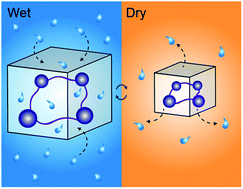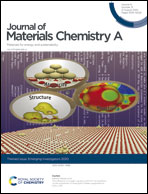Water-responsive materials for sustainable energy applications
Abstract
Water-responsive (WR) materials that mechanically change their volume in response to changes in relative humidity or a water/humidity gradient can generate significantly higher energy actuation compared to natural muscles and conventional actuators. Recent proof-of-concept demonstrations have shown the great potential of using WR materials as high performance actuator components for various energy-related applications. For example, evaporation-driven engines which are enabled by spore based WR materials directly harvest energy from natural evaporation of water and convert it into mechanical work and electricity, highlighting the possibility of using this untapped energy source of evaporation as an additional option for clean and low-cost energy generation and storage. Despite the growing interest in these examples, research on WR materials and their applications is still in the early stage and faces multiple challenges. Namely, the fundamental mechanisms that engender a material's water-responsiveness are unclear. Additionally, current systems remain difficult to scale up, and the integration of WR materials into modern engineering systems is a critical design challenge. Here, we review the current developments in this emerging category of WR materials. We discuss up-to-date studies on both natural and synthetic WR materials, which include their processing, characterization methods, and scientific and technical challenges that can possibly be overcome in future research endeavours.

- This article is part of the themed collection: Journal of Materials Chemistry A Emerging Investigators


 Please wait while we load your content...
Please wait while we load your content...